Magnesium Complex
Magnesium Complex
- Contains all >75 minerals and trace elements found in nature, in the correct ratios and in ionic form, thus well absorbable
- Fully natural, 100% vegan formula
- Based on seawater concentrate
Description

Source of Magnesium
Our Magnesium Complex formula distinguishes itself by its unique source of Magnesium: Aquamin MG TG® seawater concentrate, derived from the red algae Lithothamnion calcareum. This red algae thrives in the clean waters of the Atlantic Ocean and serves as the natural source of magnesium in our product. Aquamin MG TG® is a versatile mineral source because, in addition to magnesium, it also contains other minerals and trace elements, such as calcium and iron. This creates a synergistic effect, enhancing the absorption and utilization of magnesium by the body. Magnesium plays a vital role in many processes in the body, including the function of over 300 enzymes.
Why Minerals and Trace Elements?
In nature, there are 75 mineral elements, some of which we need in larger quantities. These are called ‘minerals.’ Minerals that are needed in very small amounts are called ‘trace elements.’
Minerals and trace elements fulfill three important functions in the body:
- They provide building blocks for bones and connective tissue;
- They transmit electrical impulses through the nervous system;
- They act as catalysts and co-factors of enzymes in all physiological processes in the body.
Minerals and trace elements are disappearing from our food
Paul Berger has collected mineral content data of foods dating back to 1914. From the selected data in the figure below, it is evident that during the last century (1914 – 1997), the mineral content of foods on average decreased by a factor of 5. The reason for this decrease is the rise of intensive agriculture, where agricultural lands are selectively fertilized with synthetic fertilizers containing a limited number of minerals. As for all other minerals and trace elements, these agricultural lands are slowly being depleted.
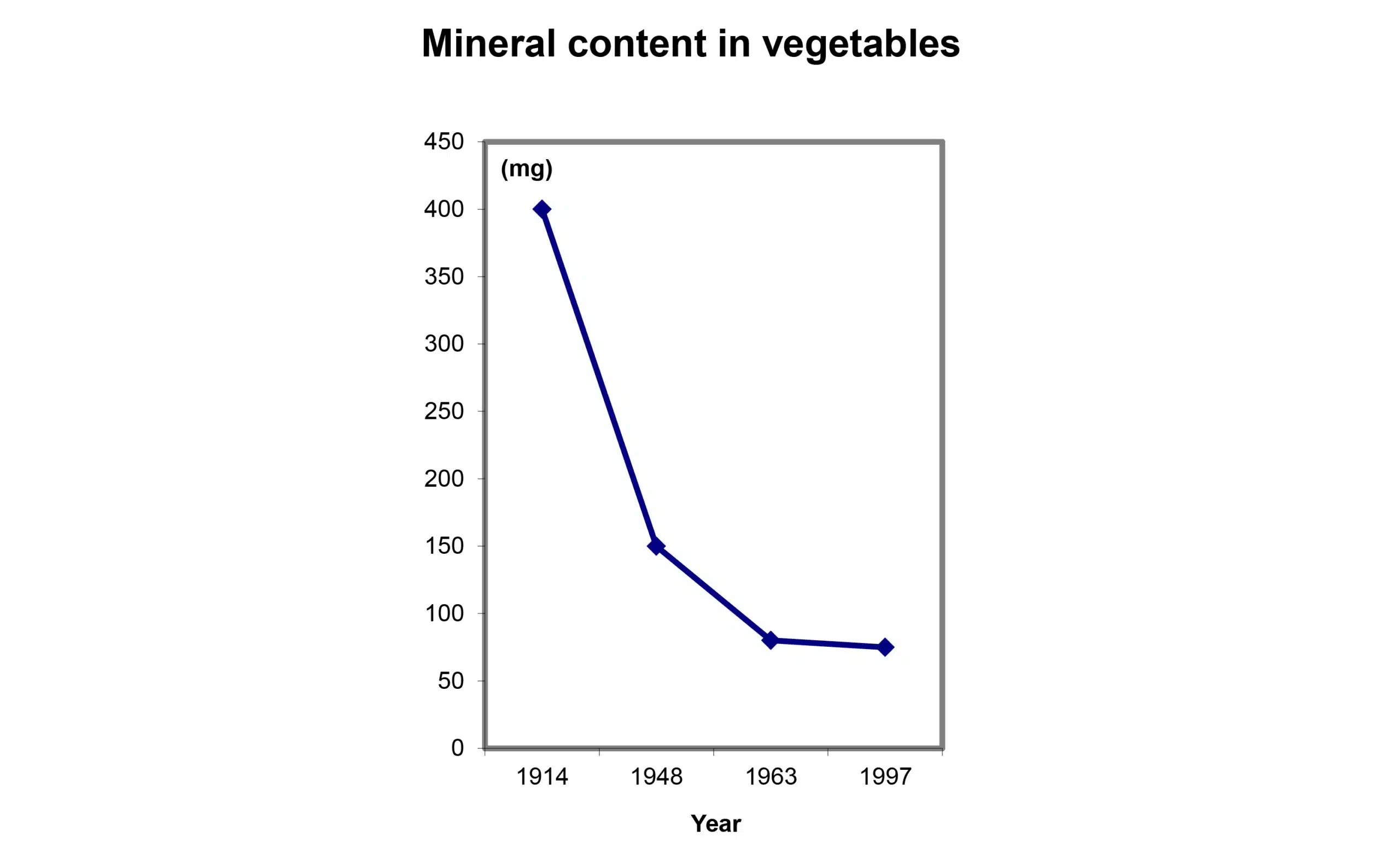
Figure: The average mineral content in vegetables in the USA during the last century. The figure shows the cumulative averages of calcium, magnesium, and iron in vegetables such as cabbage, lettuce, tomatoes, and spinach. (Bergner 1997: The Healing Power of Minerals.)
What makes a good Magnesium Complex formula?
The figure below illustrates how minerals and trace elements interact with each other. It is not advisable to take a limited number of minerals in higher concentrations as dietary supplements because each mineral can strongly influence the absorption and excretion of many other minerals and trace elements.
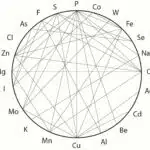
Figure 2: Interactions between minerals. The lines illustrate how minerals and trace elements influence the absorption, metabolism, or excretion of each other. (Bergner 1997: The Healing Power of Minerals).
But what does a good magnesium formula actually look like?
- A good magnesium formula is comprehensive and contains all minerals and trace elements.
- A good magnesium formula is not overdosed: a significant portion of the required minerals are already obtained from our daily diet. Supplementation with a magnesium formula should truly be a supplement and not cause a significant disruption of existing nutrient balances.
- A good magnesium formula mainly consists of natural ingredients, which are much more easily processed by the body than foreign, synthetic substances.
- Interesting is that the mineral composition of the so-called extracellular fluid (the fluid surrounding all our cells and making up 1/5 of all our body fluids) of all land animals closely resembles the mineral composition of seawater. Evolutionary biologists see this as indirect evidence that all life forms on land originated from the sea. It also means that seawater and marine organisms are enormously important sources of nutrition: they contain all 75 minerals and trace elements in the correct proportions and in ion form, making them directly absorbable for humans.
Health claims permitted by the Health Council
Magnesium:
- Magnesium contributes to a reduction of tiredness and fatigue.
- Magnesium contributes to electrolyte balance.
- Magnesium contributes to normal energy-yielding metabolism.
- Magnesium contributes to the normal functioning of the nervous system.
- Magnesium contributes to normal muscle function.
- Magnesium contributes to normal protein synthesis.Magnesium contributes to normal psychological function.
- Magnesium contributes to the maintenance of normal teeth.
- Magnesium contributes to the process of cell division.
Emphasis is placed on
Due to legal restrictions, not all details about this dietary supplement can be provided. However, for further inquiries, we can be reached at (+31) (0)70 345-0290.
Composition
Ingredients
| Each capsule contains: | ||
|---|---|---|
| %RI* | ||
| Aquamin Mg Ocean Water Concentrate | 600 mg | |
| Magnesium | 200 mg | 53 |
| Calcium | 4 mcg | - |
| Chloride | 1 mcg | - |
| Chromium | 3 mcg | - |
| Iodone | 1 mcg | - |
| Manganese | 300 mcg | - |
| Phosphorus | 0.5 mcg | - |
| Potassium | 41 mcg | - |
| Selenium | 0.3 mcg | - |
| Sodium | 900 mcg | - |
| Zinc | 2 mcg | - |
| Iron | 0.6 mg | - |
| Copper | 1.2 mcg | - |
| Cobalt | 0.3 mcg | - |
| Other (> Trace Elements) | 21 mg | - |
*RI = Reference Intake
Other ingredients: Hydroxypropyl methylcellulose (plant-based capsule)
Recommended Dosage
Adults: 1-2 capsules twice daily, or as recommended. Ingestion along with a meal is preferable.
Children: Convert the adult dose according to body weight
Background information
Minerals and trace elements in food
American scientists have analyzed the mineral contents of all vegetables over the last century. This research shows that the amount of minerals in vegetables has decreased by a factor of 5 in the course of the last century due to the changed agricultural methods:
Graph: The average mineral content in vegetables in the USA during the last century. Data on calcium, magnesium and iron in vegetables such as cabbage, lettuce, tomatoes and spinach were collected. (Bergner 1997: The Healing Power of Minerals.)
Interactions between minerals
The figure below shows how minerals and trace elements influence each other’s absorption, metabolism or excretion. It is therefore not a good idea to take large amounts of a single mineral, as it can disrupt the balance of other minerals and trace elements. For example, if you want to take extra magnesium, it is wise to take a supplement in which the other minerals and trace elements are also represented in mutually correct quantities, such as the Magnesium Complex with Aquamin® from Kala Health.
Figure: Interactions between minerals The lines show how minerals and trace elements influence each other’s absorption, metabolism or excretion. (Bergner 1997: The Healing Power of Minerals).

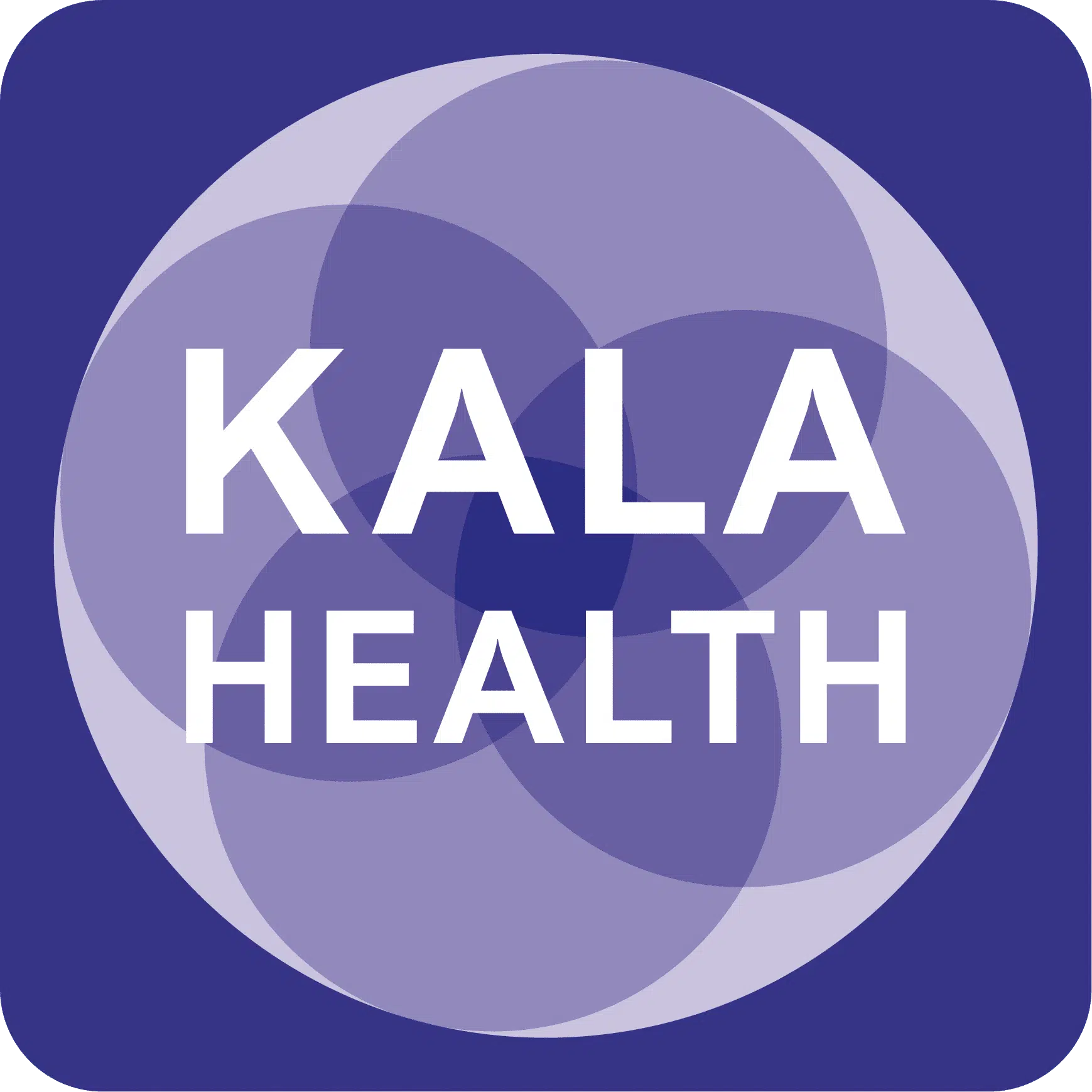
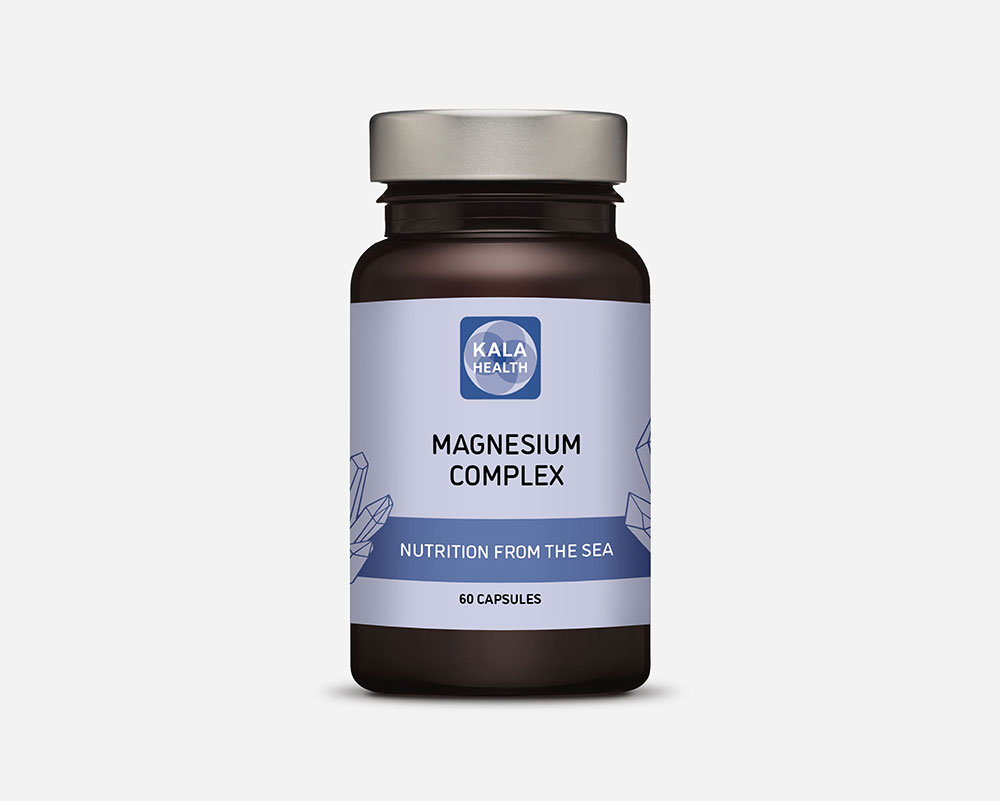
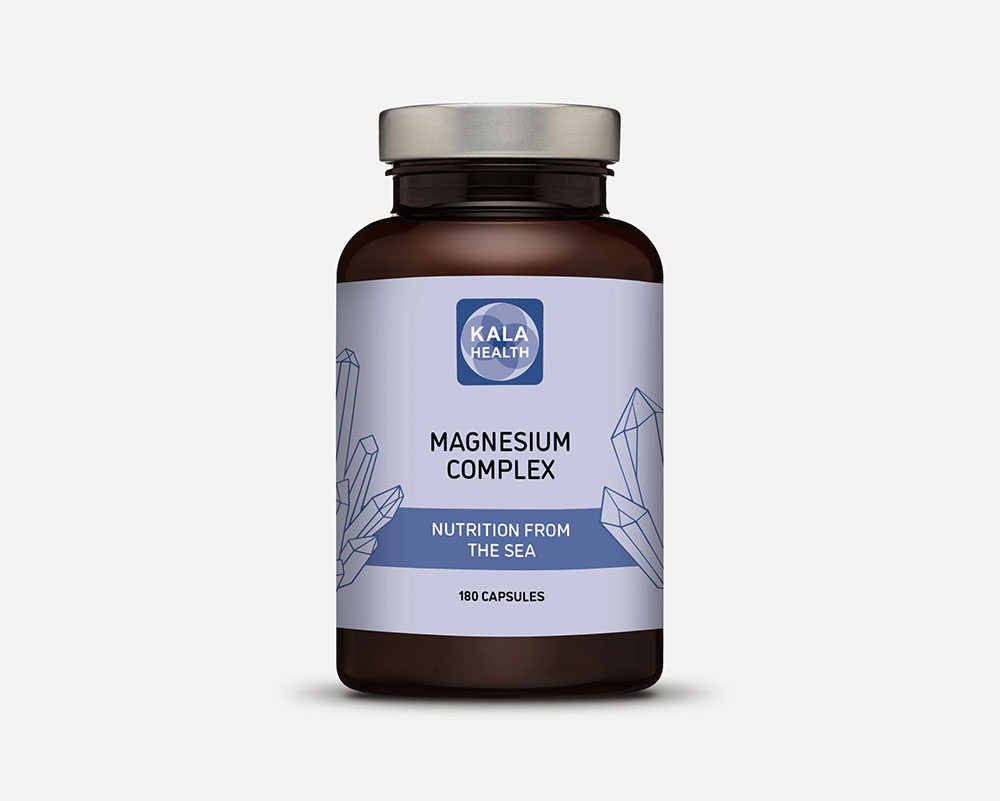





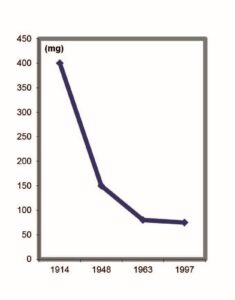
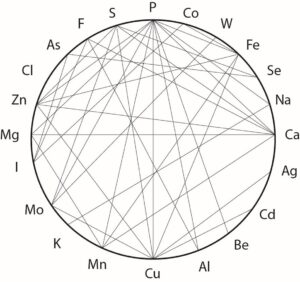

 60 or 180 capsules
60 or 180 capsules
 100, 500, 1.000 or 5.000 gram
100, 500, 1.000 or 5.000 gram
 60 or 180 licaps®
60 or 180 licaps®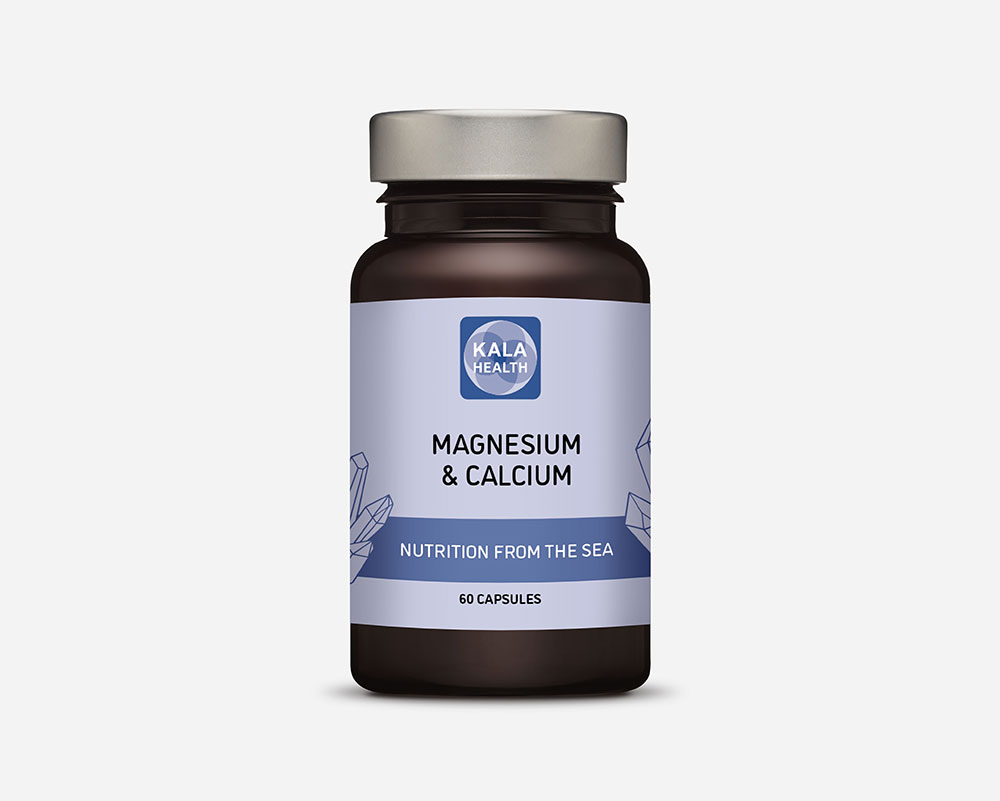
 60 or 180 capsules
60 or 180 capsules